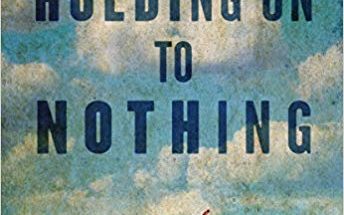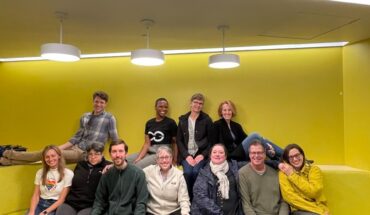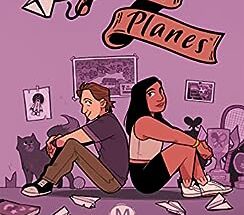 Louise Miller’s delightful debut novel, The City Baker’s Guide to Country Living, follows pastry chef Olivia Rawlings from Boston to idyllic Guthrie, Vermont following a workplace accident precipitated by a flambé dessert. Olivia’s life in Guthrie takes an unexpected turn toward the pastoral when she gains employment at the Sugar Maple Inn under supervision of the censorious owner, Margaret Hurley.
Louise Miller’s delightful debut novel, The City Baker’s Guide to Country Living, follows pastry chef Olivia Rawlings from Boston to idyllic Guthrie, Vermont following a workplace accident precipitated by a flambé dessert. Olivia’s life in Guthrie takes an unexpected turn toward the pastoral when she gains employment at the Sugar Maple Inn under supervision of the censorious owner, Margaret Hurley.
What follows is a “soup-to-nuts treat,” according to Mameve Medwed. “This book comes with a warning: do not read while hungry,” advises Natasha Solomons, rightfully.
A professional pastry chef who lives and works in Boston, Louise received a scholarship to attend GrubStreet’s Novel Incubator program. She is an art school dropout, amateur flower gardener, old-time banjo player, obsessive moviegoer, and champion of old dogs.
Louise took time out recently from her launch to speak with Dead Darlings about her new release.
Dead Darlings: What gave rise—pardon the pun—to this story, at this time?
Louise Miller: The story sparked when a few little things came together—an image that I couldn’t shake of a group of pie bakers silently watching three county fair judges eat pie in a glassed-in test kitchen; the first line of the book, which is “The day I lit the Emerson club on fire had been perfect for making meringue”; and my own wrestling with whether or not I would be happy living in the country, which had always been a dream of mine.
One of my favorite scenes during the book’s opening pages is Olivia’s test-bake interview with her prospective employer, Margaret Hurley, at the Sugar Maple Inn. What did it take to get Olivia and Margaret in the same room for the first time?
I’m so glad this scene stood out to you; it is one of my favorites as well. The relationship between Margaret and Livvy is really at the heart of the novel. For me this interview scene, and the one that follows, is actually where the book gets started. Everything that happens before this scene is a push for Livvy and Margaret to meet. My favorite scenes to write were the ones where Livvy and Margaret were together. I love the way they interact.
What challenges does Olivia face in moving from Boston to rural Vermont, and how does she overcome them?
I think all of Olivia’s challenges really come from within, but being in a small, rural town make them harder for her to avoid. It’s hard to say how she overcomes them without giving away too much of the story, but I can share that one of the things I wanted to explore in the novel is how our beliefs shape our lives, both for the good and the bad. I think The City Baker’s Guide to Country Living is about Olivia learning to see herself and her relationship to the world in a different way.
Can you talk about ways in which baking and fiction writing are similar, and how they’re different?
They are both infinitely creative processes—you can make up any combination of flavors in a cookie or ice cream, and you can have absolutely anything happen to your characters. Of course, both with baking and writing, some combinations work better than others.
How are they different—that’s an easy one. Baking offers immediate gratification. I can make a batch of chocolate chip cookies, from raw ingredients to handing a warm cookie to a friend, in an hour or less. Writing…I started The City Baker’s Guide in August of 2009. I will be handing the finished copy to a friend seven years later. Sharing the book is more satisfying, of course, but I have to admit there is something wonderful about the immediacy of baking a treat and getting to share it right away.
You trained formally as an artist before turning your hand to baking and fiction. You also play banjo. How have visual art and music influenced your writing?
Very much. I’m a visual writer. Before I write, I picture each scene in my mind like I am watching a movie, and transcribe what I see. My years in art school really taught me how to see—from looking at negative space in a sculpture or drawing to noticing how colors respond to each other—and I find a lot of inspiration for stories and scenes in the things that I see every day. Music also inspires me, but in a different way. I find that music, especially playing music, is a shortcut to accessing emotions. I had two songs that captured the feelings between Livvy, my protagonist, and Martin, the man she falls for, and I would listen to them over and over when I was thinking about their relationship. But I never listened while I was writing! I like to work in silence. The only exception was when I was writing contra dance scenes. I listened to contra dance tunes constantly to get the rhythm in my words.
I find myself drawn to playing music, and to drawing or painting when I am deep into a writing project. Sometimes I think I just want to find a way to procrastinate. But truthfully, I believe that when I’m writing, it opens up that creative part of my brain that is dying to make stuff. I would write and draw and play music all day, every day if I could. It is a wonderful space to be in.
To a large extent your novel exists “outside the headlines”—no terrorism, climate change, or racial strife on the surface of this narrative. To what extent, if any, did events in the so-called “real world” influence the choices you made during drafting and revision?
I started writing The City Baker during a time when I was experiencing a lot of loss. The fictional town of Guthrie, Vermont became my refuge. So I guess you could say that real-life events inspired me to create a world where the conflicts were on a smaller scale. In general I find myself drawn to stories about the quiet, personal conflicts we all experience like grief and longing and family and relationship issues.
Can you talk about the process of getting your manuscript through GrubStreet’s Novel Incubator, and eventually to market?
you talk about the process of getting your manuscript through GrubStreet’s Novel Incubator, and eventually to market?
Yes, I would be happy to! It took me three years to complete my first draft, which I wrote primarily on my own, with the help of a writing class here or there. That last year leading up to the Incubator I began to take workshops with Michelle Hoover at GrubStreet, which led me to apply to the program. During my Incubator year I revised The City Baker four times. I always say the Incubator taught me how to work. Something that I have come to really appreciate is how the Incubator prepared me to work with my editor. I learned how to revise, how to take in feedback, and how to consider my work from a healthy emotional distance.
The Incubator and GrubStreet’s Muse and the Marketplace have both been instrumental in my path to publication. I met my editor, Pam Dorman, at The Muse years back when I had only written 20 or so pages. I also met an agent who recommended that I query Alexandra Machinist at ICM, who is now my wonderful agent. And through both the Novel Incubator program and GrubStreet I have made such great friends with other writers at every stage of their careers. Not to mention mentors, who have been so supportive and helpful throughout this whole process.
Do you have a core readership in mind? If so, what do you think is the best way to reach that audience?
I actually don’t think about readers while I am writing. When I am in the middle of a story, I find myself immersed in the characters’ lives. It’s my characters that I want to make happy. But now that The City Baker’s Guide is about to hit bookshelves, I have to admit I think about readers A LOT. I think every author hopes that their book finds its way into the hands of readers who will love their characters as much as they do.
In regards to reaching an audience—I wish I knew the answer to this. When you traditionally publish, so much of book marketing and publicity is out of your hands. I do enjoy using social media—especially Instagram and Twitter—and it is important to me to be accessible to readers. I’m not sure I’ve attracted any readers this way, but it’s been really fun.
What’s next?
I had the good fortune of selling my second, unwritten novel along with my first, so that’s what I am working on now. It isn’t a sequel, but it takes place in the same fictional Vermont town.



